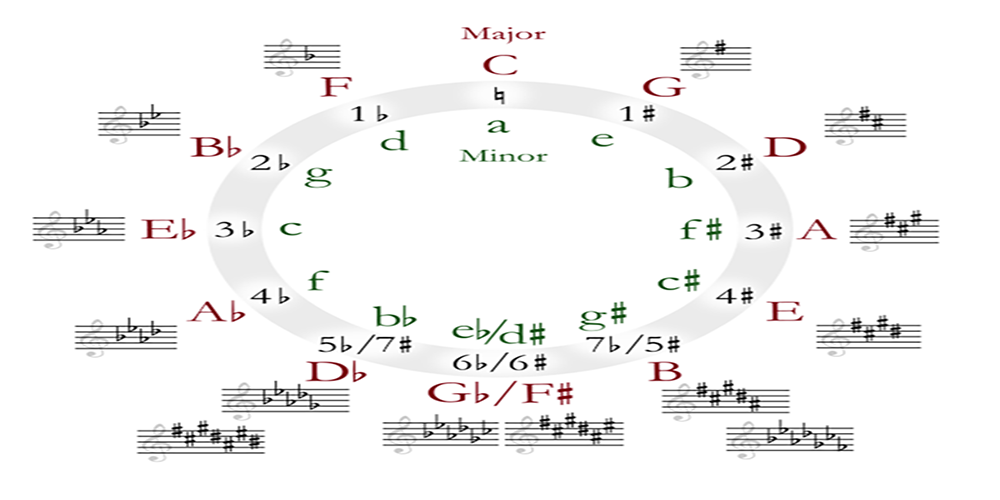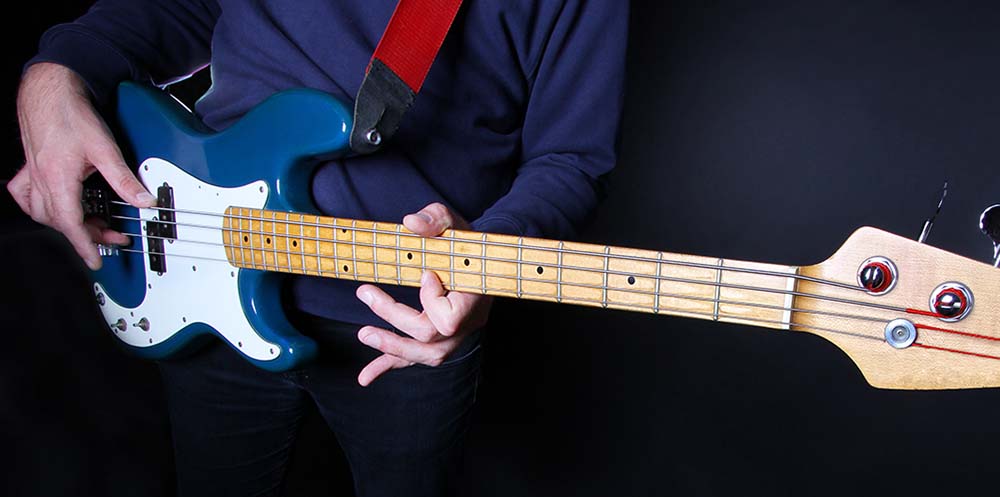The bass guitar is one of the anchors in the rhythm section of a band. Part of the bass guitar's role is to be the conduit between the drums and the rest of the band. The goal of the base guitarist is to make the bass and drums sound completely unified. Bass guitar is not the place for showing off a bunch of fancy moves. Restraint and sublety are the order of the day. Your soul focus in most situations should be to lock into the root notes of the chords and lock your ears to the rhythm of the drummer's beat and snare drums. Many of the most classic bass lines have been formed using root notes, octaves, and fifths as the framework. This will be the best place to start when learning bass guitar.
Octave Root Notes
Octaves are used in all styles of bass playing. There are only 12 root notes in music; an octave is simply the same root note at a higher or lower pitch. In that regard, they are a pattern of sound rather than a finger pattern. That means there are multiple A notes, multiple Bb notes, and on down the list.
The simplest way to unify the drums and bass is to use octave root notes. Octave root notes correlate perfectly to chords. Octaves allow you to create an active bass line without clashing with the harmony of the underlying chords. Low octave root notes correspond perfectly to the kick drum and high octave root notes correspond with the snare.
- Higher Octaves - Starting at any particular note, the higher octave of that note will always be played two strings up and two frets over. You can also play the higher octave of a note by moving to the string above it and shifting seven frets over.
- Lower Octaves - The lower octave of any note will be the exact reverse of what you do to find the higher octave. More specifically, start at a particular note and move two strings down and two frets back.
- One finger per fret - This is a good general rule to follow when you are learning. Play the low note with finger 1 and the higher octave with finger 3. It is perfectly okay to break this rule and play with your first and fourth fingers as your playing style becomes more advanced. However, for the beginner it is probably best to start with this general rule and work your way up to more complicated octave fingering.

NOTE: When you play and practice octaves, don't let them ring together at the same time. Instead, play the octave notes individually where only one note is ringing at a time. This is not to say that you can never allow multiple octaves to ring together at the same time. However, playing them independently is far more helpful and will force you to work to improve your bass guitar skills.
Circle of Fifths
After the octave root, the fifth is the most harmonically agreeable note you can play. The circle of fifths is appropriately named. It represents all the notes you can play on a bass guitar arranged into a circle. Look at the image and you'll notice it looks a lot like a clock. Each fifth corresponds to a different position on the clock with C in the 12 o'clock position. Using the circle of fifths can help you easily construct hundreds of chord progressions, lead Lines, harmonies, and just about anything else once you get the hang of it.

Below we break down the image above and list each note and its corresponding fifth. Traveling clockwise on the clock, the fifth of each note is simply the note immediately next to it.
- C --> G
- G --> D
- D --> A
- A --> E
- B --> Gb
- Gb --> Db
- Db --> Ab
- Eb --> Bb
- Bb --> F
- F --> C
- C --> G
Pay close attention to the first and last fifths listed. Notice that they are identical. That's what gives the circle of fifths its name. It literally circles back to its starting point. So how does this help you?
Believe it or not, understanding this circle and where each note lies in relation to the others gives you twelve different ways to produce the same sounding chord progression. The only difference is where you start on the clock. For example, the chord progression going from A major to D major (counter clockwise one turn) is the same as going from C major to F major. All that changes is the starting point. Try it and you will see what we mean. Although the notes and pitches are slightly different, you get the same feeling going from any major chord to the chord exactly one turn counter clockwise on the circle of fifths. The secret to chord progressions is not which chords you use, it's about their relationship between one another on the circle of fifths. There are hundreds of patterns and relationships locked into it. This obviously makes entirely too many to cover here but this basic knowledge can greatly reduce the amount of time you waste searching every fret for the notes you need. Simply look back to the circle of fifths. It will serve as your compass when developing your own chord progressions.
